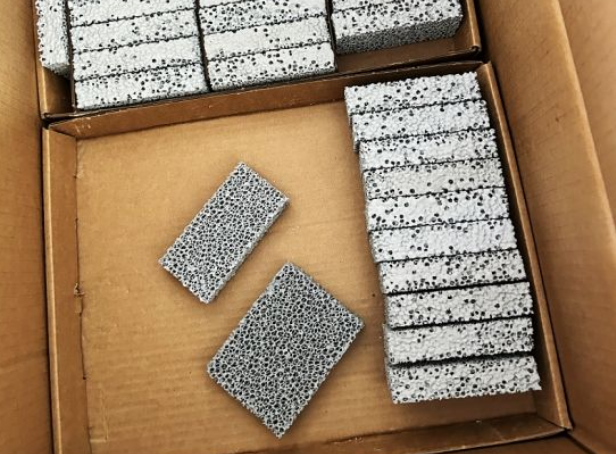Silicon Carbide Ceramic Foam (SIC) filters are used to filter molten metal, cast iron, and non-ferrous alloys. They are made from high purity fine silicon carbide powder and have a three-dimensional mesh structure with high porosity.

As the preparation technology of foamed silicon carbide continues to advance, its superior performance is gradually expanding its application scope and diversifying its styles. Silicon carbide foam ceramics are demonstrating increasing advantages over other materials in numerous application fields.
Silicon carbide foam ceramics boast high porosity, thermal conductivity, mechanical strength, oxidation resistance, and corrosion resistance. Its uneven surface with numerous micro-pores greatly enhances the contact area of the two phases. These characteristics indicate that silicon carbide foam ceramics are poised to replace traditional materials such as silica, alumina ceramics, and activated carbon as the next generation of catalyst carriers.
Foam ceramic filtration, a novel technology, effectively removes nonmetallic inclusions from alloys and purifies metal solutions. The application of silicon carbide foam ceramics in this domain significantly enhances the qualification rate and mechanical properties of metals. Therefore, widespread adoption of silicon carbide foam ceramics in metal solution purification within the casting industry is expected to yield substantial economic and social benefits.
Foam ceramic carriers are extensively utilized as carrier materials for exhaust gas purifiers globally. Silicon carbide foam ceramics have been successfully integrated into automobile exhaust gas purifiers due to their large porosity, good air permeability, large specific surface area, high thermal shock resistance, and controllable resistivity.
Foamed SIC ceramics, with developed specific surface area and low resistance loss, find application in distillation columns. Compared to traditional fillers, silicon carbide ceramic blocks exhibit lower pressure drop, increased liquid holding capacity, and improved mass transfer performance.
Foamed SIC ceramics play crucial roles in strengthening combustion processes in chemical industrial furnaces, including steam generators, radiant burners, and high-pressure adiabatic burners. They are gaining attention across various sectors for their compact size, fuel efficiency, wide power regulation range, stable combustion, and minimal pollutant emissions.
Additionally, foamed silicon carbide ceramics exhibit excellent corrosion resistance and can be electrically heated, making them suitable for heating corrosive fluids in construction and semiconductor fields. They are also utilized in various heat exchangers, electronic component materials heat treatment, mobile bed floors, humidifiers, boiling water systems, microbial carriers, and more, owing to their high porosity, low pressure, large heat exchange area, and unique spatial network structure.
Previous: Copper Mesh
Copyright:@2020-2021
Comments Please sign in or sign up to post.
0
0 of 500 characters used